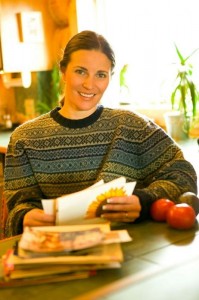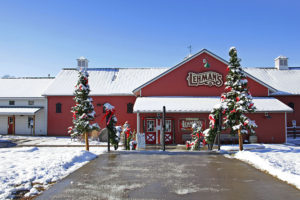
Talking to my grandmother is always enlightening, but especially so when she speaks about living through the Great Depression. She was the baby in a family of seven children and has many memories of those hard times. “Use it up, wear it out, make it do or do without” is an axiom that has stuck with her for 85 years, and a good reminder for all of us Baby Boomers, Gen X’ers, Gen Y’ers, Millennials and so on.
Generations ago, almost everyone had the following skills and many, many more. Some will save you money, some are eco-friendly, some are healthier for you and almost all will come in extremely handy in an emergency or power outage. Here are a few simple ways to start doing something with your own two hands, today. (Your grandparents would be proud.)
DARN! How to fix a hole in a sock. Years ago, people fixed things when they were broken instead of just throwing them away and buying new. Think about it. Not only did they not have money to buy a new (fill in the blank), chances were they had made whatever needed mending themselves in the first place. If you hand-knitted your own socks, you’d fix them when they got a hole. Do you throw away a shirt when it loses a button? No, you sew the button back on. Believe it or not, darning socks is easy. And made much, much easier with this clever little tool, used for centuries for this same purpose.

PLUNGE AND SCRUB. How to do laundry without electricity. Even if you don’t do laundry exclusively “by hand,” every family should know how to clean their clothes during emergencies or power outages, while traveling, for lifting really tough stains, or simply when you need a few things laundered but don’t want to fill up the whole washing machine. Hand washing reduces wear and tear on clothes, saves water and electricity and just might get your clothes cleaner, too. In a large basin, wash tub or even your bathtub, use a hand washer to plunge soapy water through clothes. Wring out gently and repeat with clean water for a good rinse. Hang to dry. If you want to really feel like a pioneer, use a traditional washboard. There – fresh, clean clothes with just a little “people power.”

HOT AND FRESH. How to bake a loaf of bread. A hundred years ago, most people made their “daily bread” instead of buying it at a supermarket (because there weren’t any). I grew up on homemade bread, but somehow working with yeast scared me for years. Until I tried my father’s tried-and-true “no knead” recipe. Voila – I had done it, and it was…easy! From there I moved on to making many different types of bread, including traditional white, French, even foccacia and pita bread (my favorite). A good, easy recipe, a good loaf pan and a couple trusted tools will give you the confidence to try it – and love it!

GROW SOMETHING. How to grow (at least a little) food. Not a green thumb? Start tiny, with an herb. Let it grow on your windowsill. When it’s big enough, snip some off and add it to your cooking. Now, you’re hooked. Move on to a container garden on the patio or deck. Plant a tomato, some basil and thyme. Or, a salad garden to harvest right outside your door. Who knows? In a year or two you may be enjoying your own sweet corn, green beans and potatoes. My grandmother remembers her parents planting rows upon rows upon rows of potatoes. They had to; times were tough and there were nine mouths to feed.

MAKE IT LAST. How to preserve (at least a little) food. You don’t have to go all out and invest in hundreds of jars. But having some ready-to-eat, home-preserved food when the power goes out, or simply on a busy Thursday night, is invaluable. Plus, there’s the huge benefit of KNOWING WHAT’S IN THE JAR. You control the ingredients. Start with a fun, manageable project like canning grape juice (it really is ridiculously easy) or making some pickles right on your countertop. These are great ways to get your feet wet before you jump into the pool of canning wild game and entire meals, like soup. Once again, great-grandma would be proud.





























